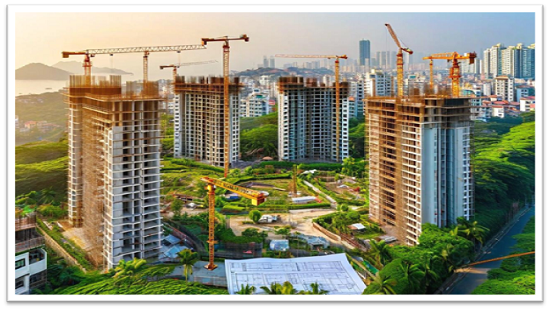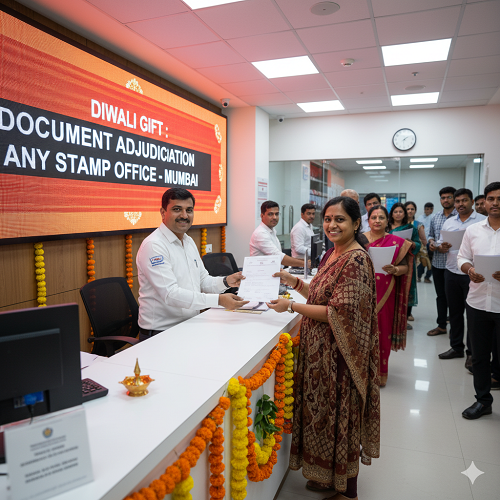
Mumbai’s Urban Renaissance, Chembur & Malabar Hill to Undergo ₹4,800 Crore Redevelopment by Bengaluru-Based Builders
Mumbai has always been a city that reinvents itself. From its colonial-era mills to its modern-day skyline, the financial capital of India has continuously transformed to match its economic ambitions. Yet, behind the glittering façade lies an urgent need for renewal. Much of the city’s housing stock is decades old, often inadequate for today’s urban realities. In this context, redevelopment has emerged as Mumbai’s next growth chapter — a practical response to limited land, growing population density, and rising aspirations.
Amid this transformation, Bengaluru-based real estate developer Puravankara Ltd has made a decisive move into Mumbai’s redevelopment market. The company recently announced two significant projects, one in the elite precinct of Malabar Hill and another in the evolving suburb of Chembur. Together, these projects represent an investment of nearly ₹4,800 crore and mark Puravankara’s strongest step yet toward establishing a long-term presence in India’s most competitive real estate market.
Redevelopment: Mumbai’s Imperative, Not Just an Opportunity
As India’s cities mature, the focus of urban development is shifting from expansion to renewal. In Mumbai, where vacant land is scarce and old structures dominate the landscape, redevelopment is no longer a niche segment — it is an urban necessity. According to data from Maharashtra’s housing department, nearly 50 percent of the city’s buildings are more than 30 years old, making them ripe for structural and social revitalization. This transformation is not only about constructing modern homes; it is about optimizing land use, improving infrastructure, and creating safer, sustainable communities.
Puravankara’s new projects are well positioned within this urban narrative. The company’s Malabar Hill redevelopment, spread across 1.43 acres, offers 0.7 million square feet of potential development, valued at approximately ₹2,700 crore. Its second project in Chembur, covering four acres and 1.2 million square feet, carries an estimated value of ₹2,100 crore. Together, they add close to two million square feet to Mumbai’s evolving skyline and reinforce Puravankara’s strategy to strengthen its presence in high-demand urban centers.
Numbers That Reflect Strategic Growth
Puravankara’s performance metrics reveal a company in steady ascent. In the first half of FY26, it expanded its developable area by 6.36 million square feet across four projects, achieving a gross development value (GDV) of about ₹9,100 crore. The firm also reported pre-sales of ₹1,322 crore in the July–September quarter, marking a 4 percent increase from ₹1,270 crore in the same period last year. For the first half of FY26, total pre-sales reached ₹2,445 crore, reflecting consistent year-on-year growth. Perhaps most notably, the company’s average realisation per square foot improved by 7 percent to ₹8,814, underscoring both market confidence and product quality.
These figures illustrate more than just commercial expansion. They point to a disciplined approach rooted in execution, financial prudence, and strategic timing. As Managing Director Ashish Puravankara observed, “Our growth momentum remains strong, supported by sustained demand and timely project execution.” That focus on delivery and trust-building has become critical in an industry where credibility often defines long-term success.
Why Mumbai Remains the Developer’s North Star
Despite high entry barriers, Mumbai remains the most compelling destination for real estate developers in India. The city’s unique blend of constrained land supply, global financial relevance, and rising property values continues to attract institutional capital and national players alike. With over 10,000 housing societies awaiting redevelopment approval, the scale of potential transformation is enormous. Puravankara’s decision to anchor itself in both Malabar Hill — one of India’s most prestigious residential areas — and Chembur — a growing mid-luxury hub — reflects a balanced portfolio strategy aimed at capturing both premium and emerging segments of the market.
For Mumbai, each redevelopment project represents more than an architectural upgrade. It is a catalyst for urban productivity, job creation, and local infrastructure renewal. When executed well, redevelopment enhances living conditions, boosts land efficiency, and contributes to municipal revenues through higher property valuations. The multiplier effects extend far beyond real estate, feeding into sectors like construction materials, design services, and urban logistics.
Policy Tailwinds and the Future of Urban Renewal
Government policy is increasingly aligned with this shift toward urban regeneration. The Mumbai Development Plan 2034, along with regulatory improvements in RERA and FSI norms, has created a framework conducive to responsible redevelopment. Incentives for cluster housing, faster project approvals, and digitized documentation are also helping streamline execution. The city’s evolving regulatory environment thus supports private players willing to commit long-term capital to renewal projects.
For developers like Puravankara, the opportunity lies not just in replacing buildings, but in creating value — architectural, social, and environmental. By integrating modern design with efficient land use and sustainable practices, redevelopment projects can redefine how cities grow. The company’s latest ventures signal a belief that India’s urbanization story is entering a more sophisticated phase, where growth is measured not merely in square feet but in liveability and resilience.
Building the New Mumbai
Mumbai’s transformation is often described as a work in progress, and rightly so. Each redevelopment project adds a layer to its complex urban mosaic. The ₹4,800 crore investment by Puravankara Ltd is a timely reminder that real estate, when guided by vision and responsibility, can be a force for renewal rather than congestion. As India’s cities prepare to house nearly 600 million people by 2036, the success of such projects will define how well the nation manages its urban transition.
In the long run, Puravankara’s entry into Mumbai’s redevelopment ecosystem is more than a corporate milestone. It represents confidence in the country’s economic fundamentals and faith in the future of its cities. The projects in Malabar Hill and Chembur symbolize the beginning of a broader movement — one where growth, governance, and sustainability align to build not just new homes, but a new urban future for India.



